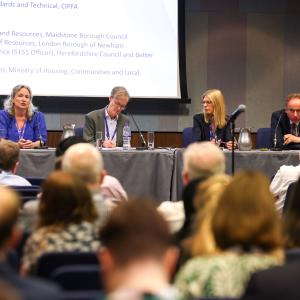George Osborne is determined to stop an independent Scotland using the pound. Few take the threat seriously but the row will continue until the referendum
Vote Yes and lose the pound. George Osborne’s threat to prevent Scotland using sterling after independence has created furious reaction in Scotland, and not just among the SNP. Even unionist commentators have been questioning the wisdom of allowing a Tory chancellor to dictate monetary policy to a country that has repeatedly rejected the Conservative Party at elections.
The idea that a UK government could build some financial Hadrian’s Wall to stop pounds leaking north sounds faintly ludicrous. Would Westminster set up customs posts? Does it really want businesses and citizens to have to change money every time they cross the border? This is why few take the threat seriously. However, Labour and the Liberal Democrats have pledged to back the chancellor in his determination to stop Scotland using the pound.
The row will continue all the way to the referendum, but one of the fascinating by-products has been a rather elevated discussion about what a currency actually does, and how a new one might be created. Most on the Yes side agree with the Wall Street Journal that it would be impossible to stop Scotland using the pound even in the unlikely event that Westminster tried to carry out its threat.
The first option for an independent Scotland would be to issue a Scottish pound and set it at one-to-one parity with sterling. The Scottish government would set up a monetary authority or ‘currency board’ to regulate the circulation of notes and coins and hold reserves to ensure stability.
There are numerous examples of this across the world, including Denmark, which shadows the euro; Hong Kong, which shadows the dollar; and the Falkland Islands and Gibraltar, which have currency boards based on sterling. After Ireland became independent it issued a pound that was pegged against the UK pound for the next half-century.
A government running a shadow currency has limited powers to manipulate interest rates or print money, and has to raise taxes to finance current spending. To many this sounds like a very sensible arrangement – including the Adam Smith Institute, which argued recently that this kind of arrangement makes governments behave responsibly because they can’t run up massive debts.
If the country in question did run up debts, defaulted or tried to boost inflation, there would be instability – as when Argentina defaulted in 2001. However, as the governor of the Bank of England, Mark Carney, pointed out in his Edinburgh address in February, Scotland and England have very similar economies in terms of GDP, business cycle and labour productivity. So they are in the same monetary boat.
A Scottish currency would be backed by oil and green energy reserves, that would enhance stability. Scotland would not be like Greece, a basket case economy permanently in need of financial bailouts. It would be more like Sweden, which has its own currency within the European Union. Or Norway, which is outside the EU and whose currency floats against the dollar and euro.
Unionists like Danny Alexander, the Chief Secretary to the Treasury, insist that if the UK still sets interest rates, Scotland isn’t really independent, and he has a point. But no country is an island.
Scotland might, like Ireland, consider joining the euro if the UK walks away from the EU and the eurozone returns to stability. But there would be no urgency. Especially since the commission president, José Manuel Barroso, said it would be ‘almost impossible’ for Scotland to join the EU. Which means Ukip might actually win some votes in Scotland at the European elections in May.
Iain Macwhirter is political commentator on the Sunday Herald









